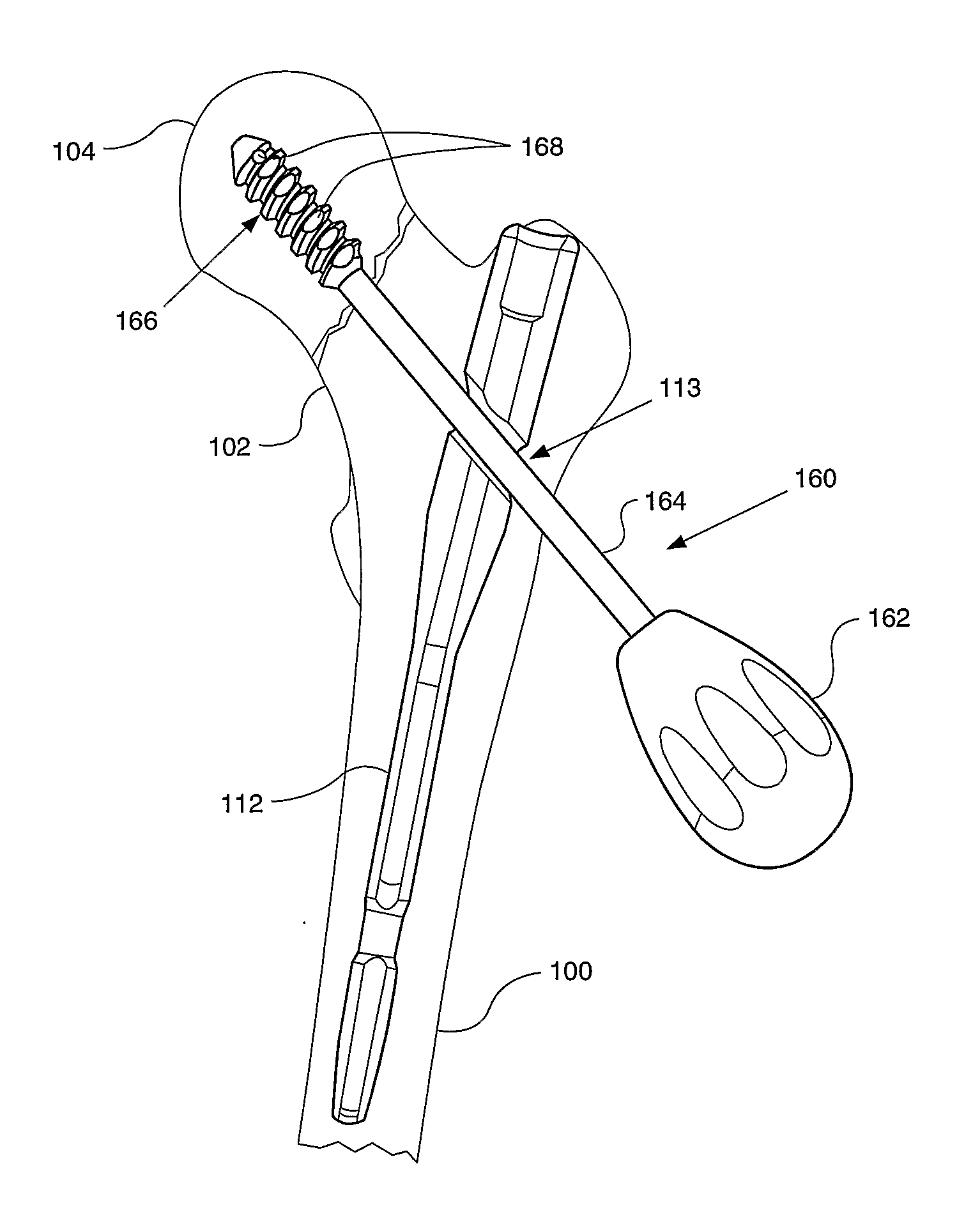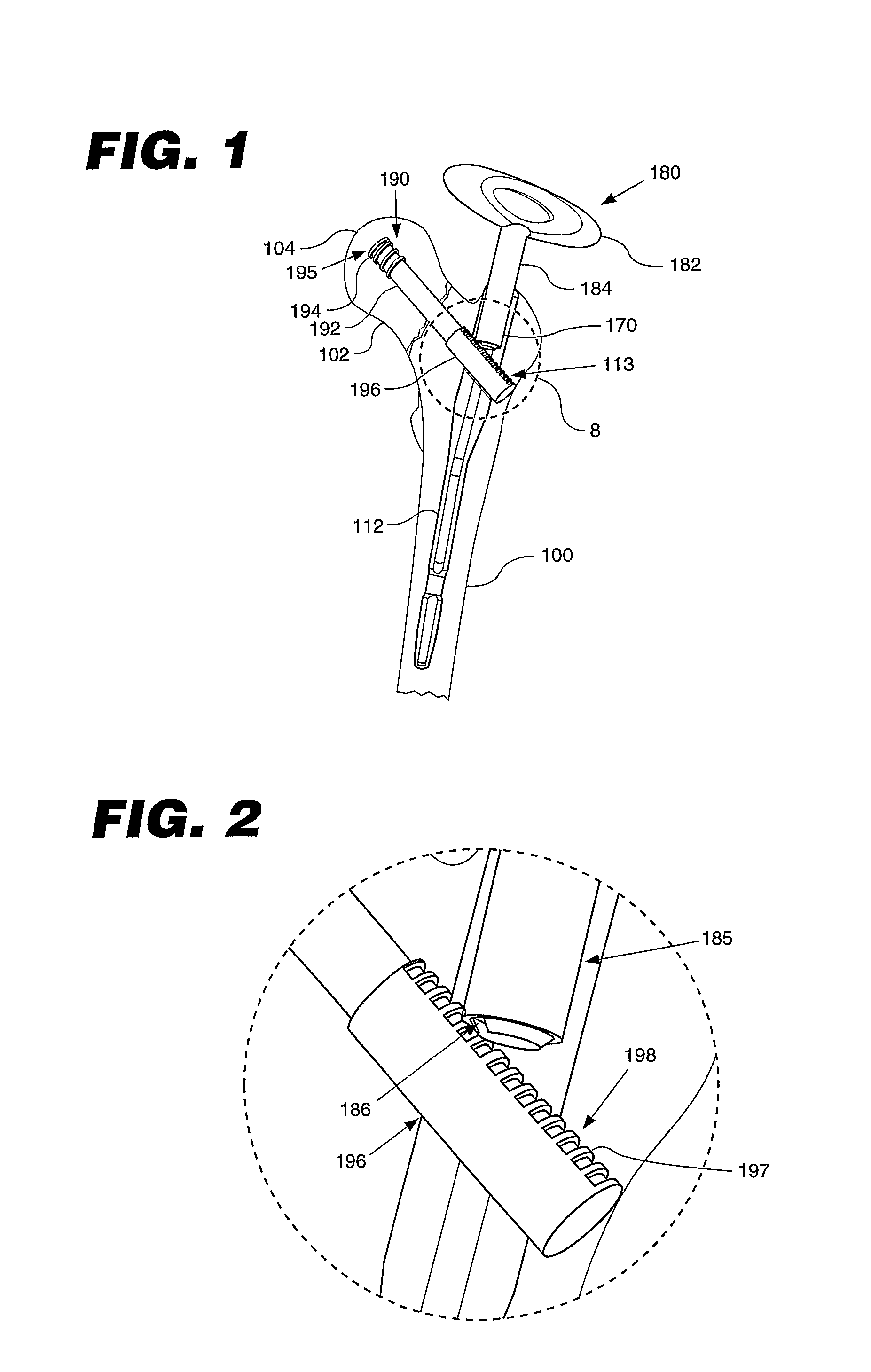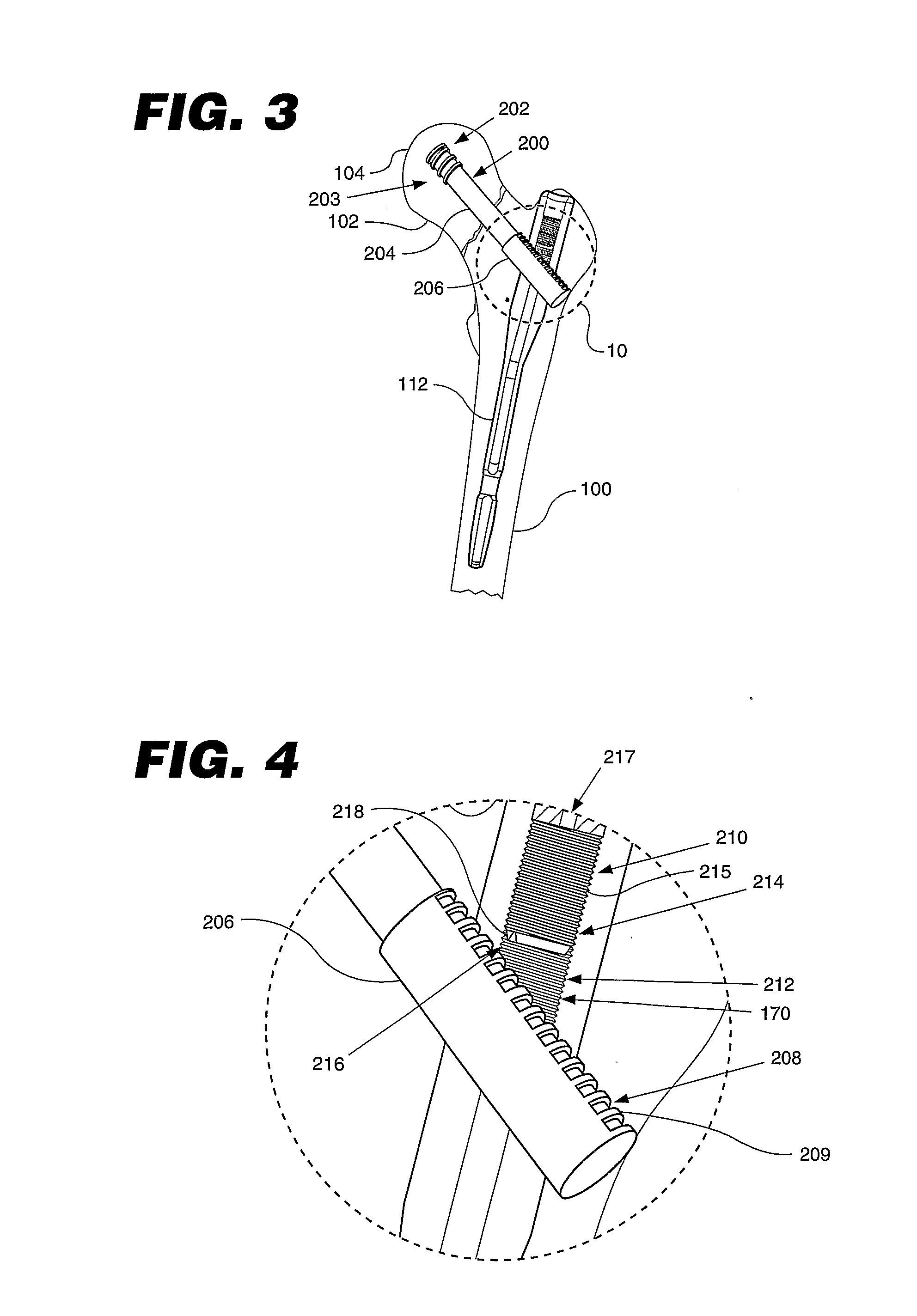Methods and Instruments of Reducing a Fracture
a fracture and fixation method technology, applied in the field of orthopaedic instruments, can solve the problems of fracture reduction that is not stable or anatomically correct, non-union or malunion, etc., and achieve the effect of reducing the fracture, reducing the fracture, and reducing the fracture load
- Summary
- Abstract
- Description
- Claims
- Application Information
AI Technical Summary
Benefits of technology
Problems solved by technology
Method used
Image
Examples
Embodiment Construction
[0054]Referring to the accompanying drawings in which like reference numbers indicate like elements, FIGS. 1 and 2 illustrate a femur 100, a femoral neck 102, a femoral head 104, and a first instrument for reducing a fracture of a bone. In the depicted embodiment, the first instrument is used to reduce a fracture on a femoral neck of a femur. The first instrument includes an orthopaedic surgical implant 112, an implant member 190, and a driving member 180. In the embodiment depicted in FIG. 1, the orthopaedic surgical implant 112 is an intramedullary nail. The intramedullary nail 112 has a longitudinally extending bore 170 and a transverse hole 113. The implant member 190 is associated with or connected to the transverse hole 113. In the embodiment depicted in FIG. 1, the implant member 190 is slidingly engaged with the transverse hole 113. In some embodiments, the implant member 190 is cannulated to allow delivery of a material to the bone. The material may be a bone cement, a biol...
PUM
 Login to View More
Login to View More Abstract
Description
Claims
Application Information
 Login to View More
Login to View More - R&D
- Intellectual Property
- Life Sciences
- Materials
- Tech Scout
- Unparalleled Data Quality
- Higher Quality Content
- 60% Fewer Hallucinations
Browse by: Latest US Patents, China's latest patents, Technical Efficacy Thesaurus, Application Domain, Technology Topic, Popular Technical Reports.
© 2025 PatSnap. All rights reserved.Legal|Privacy policy|Modern Slavery Act Transparency Statement|Sitemap|About US| Contact US: help@patsnap.com



